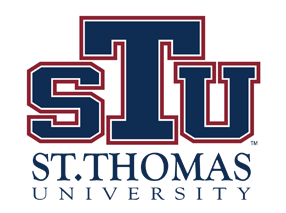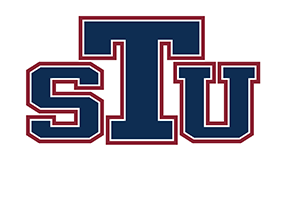Types of Aid
Financial assistance is available from a variety of sources and can help with expenses for undergraduate, graduate, and professional education. Learn more about the types of Financial Aid available to students in the sections that follows.
Grants
Grants are financial awards that are awarded to the students at no cost and they do not have to be paid back in the future.
State Grants
This program is a non-need based grant funded by the State of Florida. EASE provides tuition assistance to full-time (12 credits or more per semester) students from Florida attending private, independent colleges and universities located in the state. A student must be a permanent resident of Florida (for other than educational purposes) for at least 12 consecutive months prior to the semester of enrollment. Dependent student’s eligibility is based on a parent’s Florida residency requirement. This program provides approximately $3,500 per academic year, subject to state budget appropriations.
FSAG is a need-based grant funded by the State of Florida. Students must complete the Free Application for Federal Student Aid (FAFSA) to be considered for the FSAG. These funds are limited; students eligible for the FSAG have the right to be considered as long as funds are available. This grant provides approximately $1,500 per academic year to full-time students (12 credits or more per semester), subject to state budget appropriations. Priority is given to students who apply prior to the priority deadline of February 1st.
Florida students who have earned a Florida Bright Futures Scholarship can utilize these funds at St. Thomas University. The amount is determined by the type of scholarship earned and is equal to a fixed cost per credit hour. Award amount for the Florida Academic Scholars is $211.00 per credit and award amount for Florida Medallion Scholars is $158.00 per credit.
Students who are not Florida residents should contact their State Department of Education. Some states provide transferable state grants to students who qualify, based on financial need. Out-of-state students can use these grants to attend a college or university outside of their state. Students should contact their State Department of Education for further details, application procedures, and deadlines.
Federal Grants
To receive aid from the federal and state student aid programs, you must meet the following criteria:
- Must demonstrate financial need
- Must have a high school diploma or a General Educational Development (GED) certificate
- Must be enrolled or accepted for enrollment as a regular student working toward a degree or certificate in an eligible program
- Must maintain Satisfactory Academic Progress (SAP)
- Must have a valid Social Security number (SSN)
- Must not be in default on a federal loan or owe a refund on a federal student grant received at any institution
- Must not be convicted for the possession or sale of illegal drugs while you were receiving federal student aid.
A need-based grant funded by the Federal government for undergraduate students seeking their first bachelor degree. Pell Grants may vary each year. The actual amount awarded is based on the student’s actual enrollment status each semester and the Estimated Family Contribution (EFC) as calculated by the Department of Education.
A need-based grant funded by the Federal Government and available on a limited basis to eligible undergraduate students. Priority is given to students with the greatest financial need. You must be enrolled full-time to be considered for this grant. This grant provides approximately $800 to Full Time Pell eligible students with the lowest EFC as funding is available. Priority is given to students who apply prior to the priority deadline of February 1st.
Student Employment
Federal Work-Study positions are awarded to students who qualify based on need. A Federal Work-Study Award on your financial aid offer is not a guarantee of employment or funds; students must find an on-campus job and work the necessary hours to earn up to the amount for which they are eligible.
Veterans Benefits
Veteran students who plan to utilize their VA educational benefits should contact the VA certifying school official after the appropriate VA application form has been submitted to the Department of Veterans Affairs.
Loans
Federal Direct Loans
The William D. Ford Loan Program offers Direct Loans to students who need help paying for their educational expenses. Although many students rely on low-cost Direct Loans to help pay education expenses, students are under no obligation to borrow. Unlike scholarships and grants, educational loans must be repaid with interest (when applicable). Never borrow before you have exhausted all other sources of financial aid. More information about loans.
A need-based long-term loan administered by the U.S. Department of Education. These loans are awarded to eligible undergraduate students who demonstrate financial need to help cover the costs of higher education at a college or career school. Eligibility is determined by the information provided on the Free Application for Federal Student Aid (FAFSA) and the school’s total cost of attendance minus all other aid received.
A long-term loan administered by the U.S. Department of Education. These loans are awarded to eligible undergraduate, graduate, and professional students, but in this case, the student does not have to demonstrate financial need to be eligible for the loan. Eligibility is determined by the information provided on the Free Application for Federal Student Aid (FAFSA) and the school’s total cost of attendance minus all other aid received.
The Direct parent PLUS Loan is a low-interest loan available to parents of dependent undergraduate students. This is a non-need based loan for those who do not have an adverse credit history. The Direct Parent Plus loan amount is subject to the parent’s credit approval and the student’s cost of attendance minus all other aid received.
The Direct PLUS Loan for Graduate/Professional Students is a long-term, low-interest loan for Graduate and Professional Students. This is a non-need based loan for those who do not have an adverse credit history. Borrowers may borrow up to the total cost of attendance minus other financial aid received. Borrowers must apply for the maximum eligibility under the Direct Loan Program prior to applying for Direct PLUS Loan for Graduate/Professional Students.
Federal Direct Loan origination fees
| Loan Type | Interest Rate For loans disbursed from 7/1/20 – 6/30/21 |
Origination Fee For loans disbursed from 10/1/20 – 9/30/21 |
Origination Fee For loans disbursed from 10/1/19 – 9/31/20 |
| Subsidized/Unsubsidized (Undergraduate Students) |
2.75% Fixed | 1.057% | 1.059% |
| GR Unsubsidized [Grad/Prof] | 4.30% Fixed | 1.057% | 1.059% |
| Parent PLUS | 5.30% Fixed | 4.228% | 4.236% |
| GR PLUS | 5.30% Fixed | 4.228% | 4.236% |
To Understand how interest is calculated and what fees are associated with your federal student loan please visit: https://studentaid.ed.gov/sa/types/loans/interest-rates
For more information about loans interest rate, details and criteria, please visit:
Federal Interest Rates and Fees | Federal Student Aid
Subsidized and Unsubsidized Loans | Federal Student Aid
Other Types of Loans
Alternative loans are available through commercial lenders for educational costs during periods of enrollment. They are based on credit-worthiness. We strongly suggest that students submit a FAFSA and seek federal loan assistance before attempting to participate in any alternative loan programs. To compare lender benefits and apply for a Private Loan, please visit: ELMSelect – St. Thomas University
ATTENTION: Please be type and select our school: St. Thomas University.

